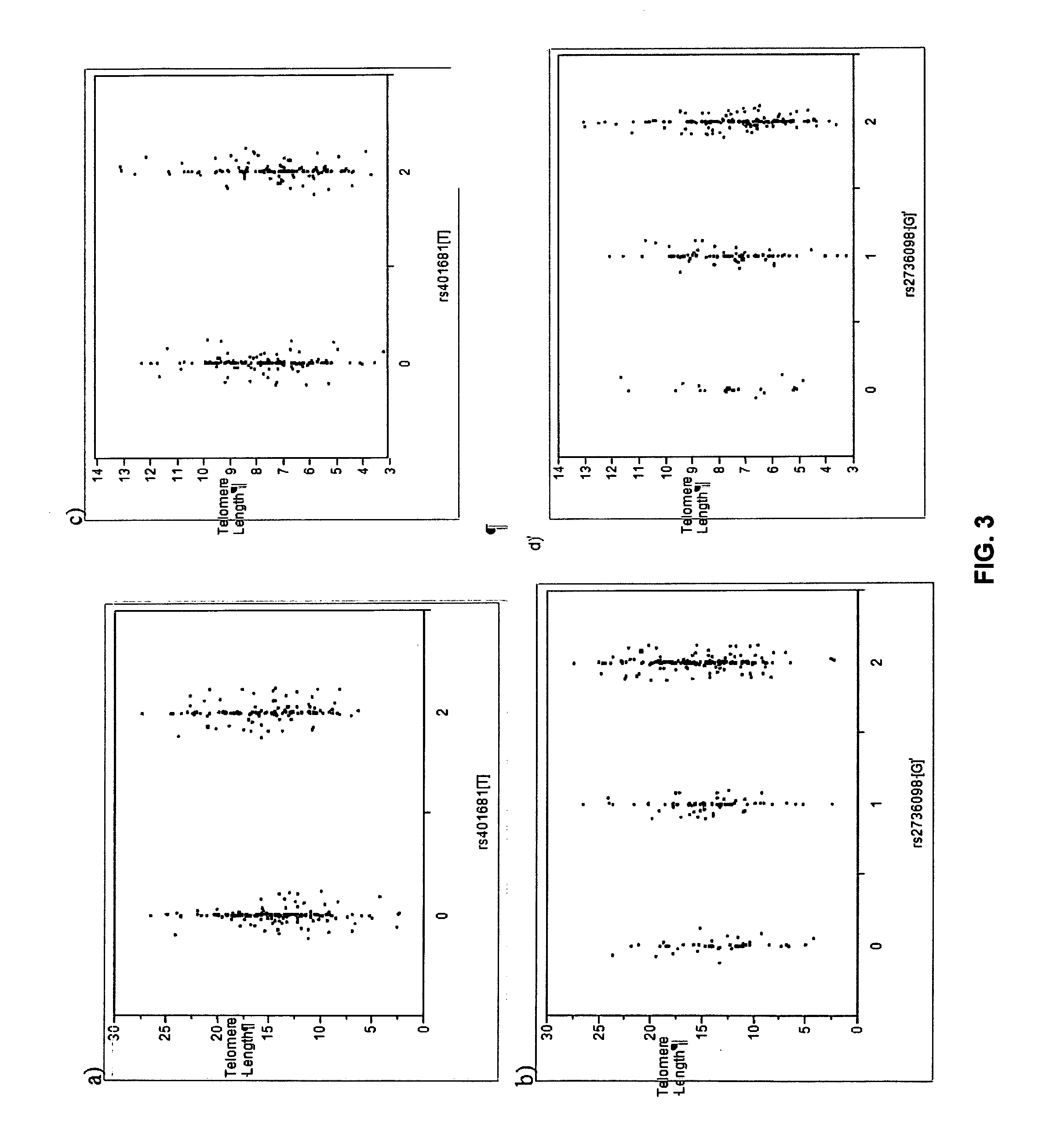Genetic Variants Predictive of Cancer Risk
a gene variant and cancer risk technology, applied in the field of gene variant predictive of cancer risk, can solve the problems of uncontrolled growth, increased risk of scc and bcc, poor prognosis, etc., and achieve the effect of increasing cancer risk and increasing cancer risk
- Summary
- Abstract
- Description
- Claims
- Application Information
AI Technical Summary
Benefits of technology
Problems solved by technology
Method used
Image
Examples
example 1
[0349]Sequence Variants on Chromosome 5p13.3 that Associate with Cancer at Multiple Sites
[0350]Recently, genome-wide association studies of several cancers have identified common genetic variants that associate with increased cancer risk (Gudmundsson, J., et al. Nat Genet 39:631-637 (2007); Stacey, S. N., et al., Nat. Genet. 39:865-69 (2007); Yeager, M. et al. Nat Genet. 39:645-649 (2007); Gudmundsson, J., et al. Nat Genet 39:977-983 (2007); Haiman, C. A., et al. Nat Genet 39:638-644 (2007); Eason, D. F., et al. Nature 447:1087-1093 (2007); Tomlinson, I., et al. Nat Genet 39:984-988 (2007); Gudbjartsson, D. F., et al. Nat Genet. 40:886-891 (2008); Stacey, S. N., et al. Nat Genet 40:703-706 (2008); Thorgeirsson, T. E., et al. Nature 452:638-642 (2008); Gudmundsson, 3., et al. Nat Genet 40:281-283 (2008); Eeles, R. A., et al. Nat Genet 40:316-321 (2008); Hung, R. J., et al. Nature 452:633-637 (2008); Amos, C. I., et al. Nat Genet 40:616-622 (2008); Thomas, G., et al. Nat Genet. 40:310...
example 2
[0363]The C allele of marker rs401681 was found to be associated with a protection against cutaneous melanoma and colorectal cancer. Thus a significant association between rs401681(C) and protection against cutaneous melanoma (OR=0.88, P=8.0×10−4) in a sample set consisting of 2,443 melanoma cases and 30,839 controls from Iceland, Sweden and Spain. We note that a recently published study of telomere length in individuals with skin cancers showed that while short telomeres are associated with increased risk of BCC, long telomeres are associated with increased risk of melanoma (Han, J. et al. J Invest Dermatol 129, 415-21 (2009)). The rs401681(C) variant was also marginally associated with protection against colorectal cancer (OR=0.95, P=8.4×103) although this was not significant after taking into account the number of cancer sites tested.
example 3
[0364]We examined the joint effect of rs401681(C) and rs2736098 (A), for 5 cancers, using only samples typed for both SNPs (Table 10). After adjusting for rs2736098 (A), the association of rs401681(C) remained significant in all except prostate cancer. After adjusting for rs401681(C), rs2736098 (A) remained significant for 3 cancers, lung, bladder and prostate. Overall, these results indicate that neither rs401681(C) nor rs2736098 (A) can, by themselves, fully account for the association observed between sequence variants in this region and the 5 cancer types. This suggests that a unique variant capturing the effect of both rs401681(C) and rs2736098(A) remains to be discovered or, alternatively, that the region contains more than one variant that predisposes to cancers at the same or different sites, analogous to the region on 8q24 where independent variants have been found that associate with different cancer types. We analyzed the association between 27 SNPs surrounding rs401681 a...
PUM
| Property | Measurement | Unit |
|---|---|---|
| polymorphic | aaaaa | aaaaa |
| frequency | aaaaa | aaaaa |
| acid | aaaaa | aaaaa |
Abstract
Description
Claims
Application Information
 Login to View More
Login to View More - R&D
- Intellectual Property
- Life Sciences
- Materials
- Tech Scout
- Unparalleled Data Quality
- Higher Quality Content
- 60% Fewer Hallucinations
Browse by: Latest US Patents, China's latest patents, Technical Efficacy Thesaurus, Application Domain, Technology Topic, Popular Technical Reports.
© 2025 PatSnap. All rights reserved.Legal|Privacy policy|Modern Slavery Act Transparency Statement|Sitemap|About US| Contact US: help@patsnap.com



